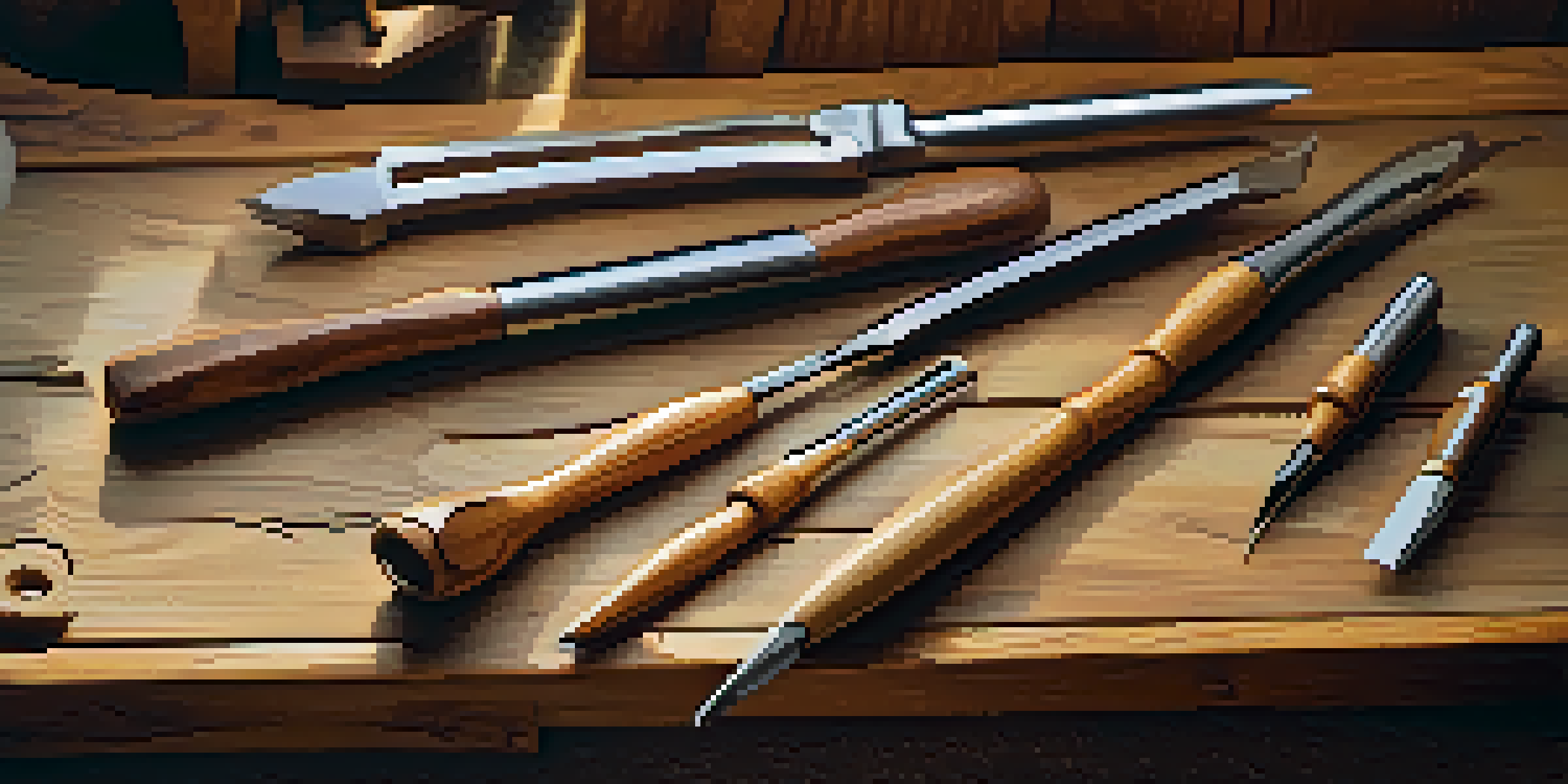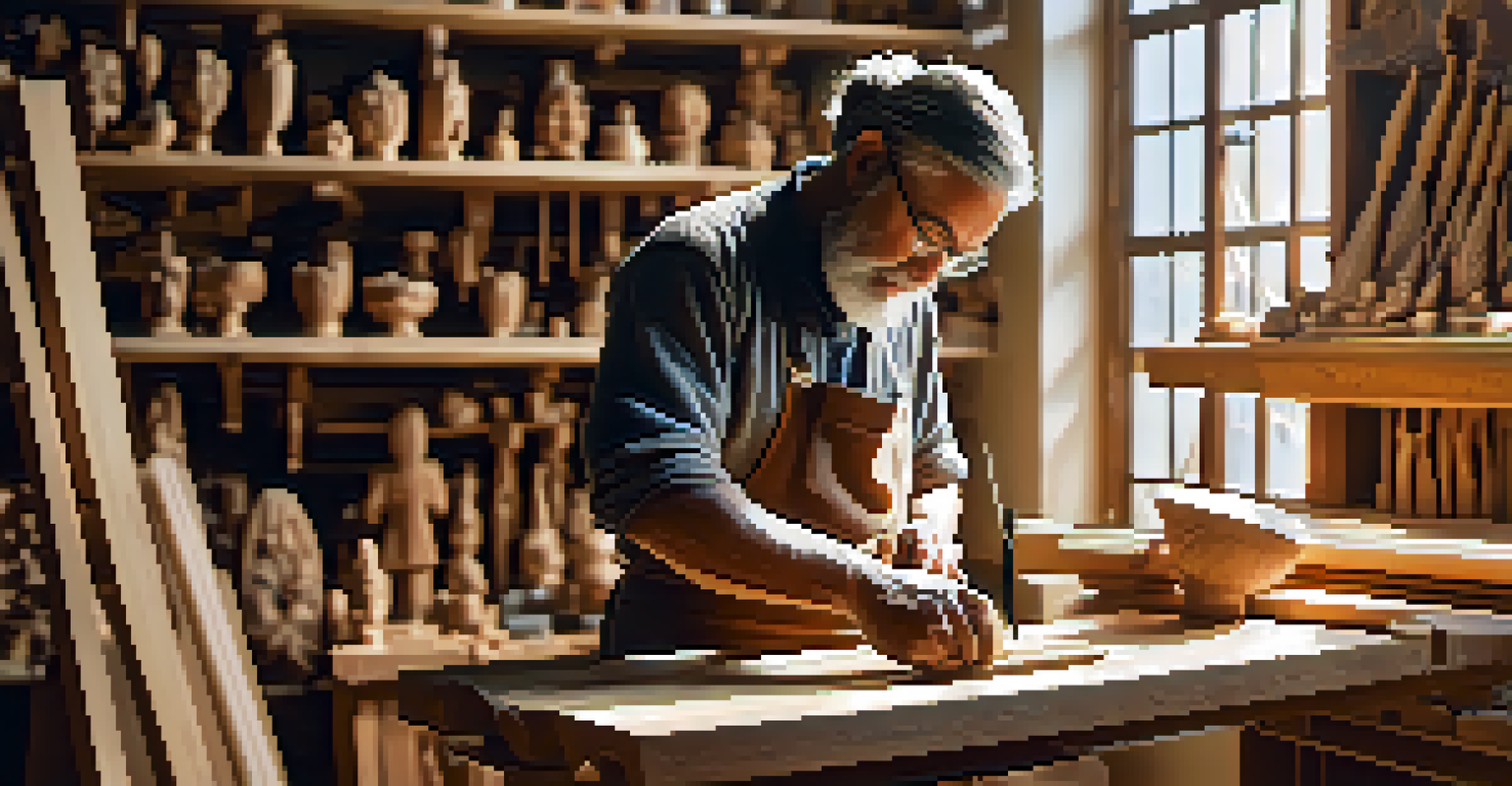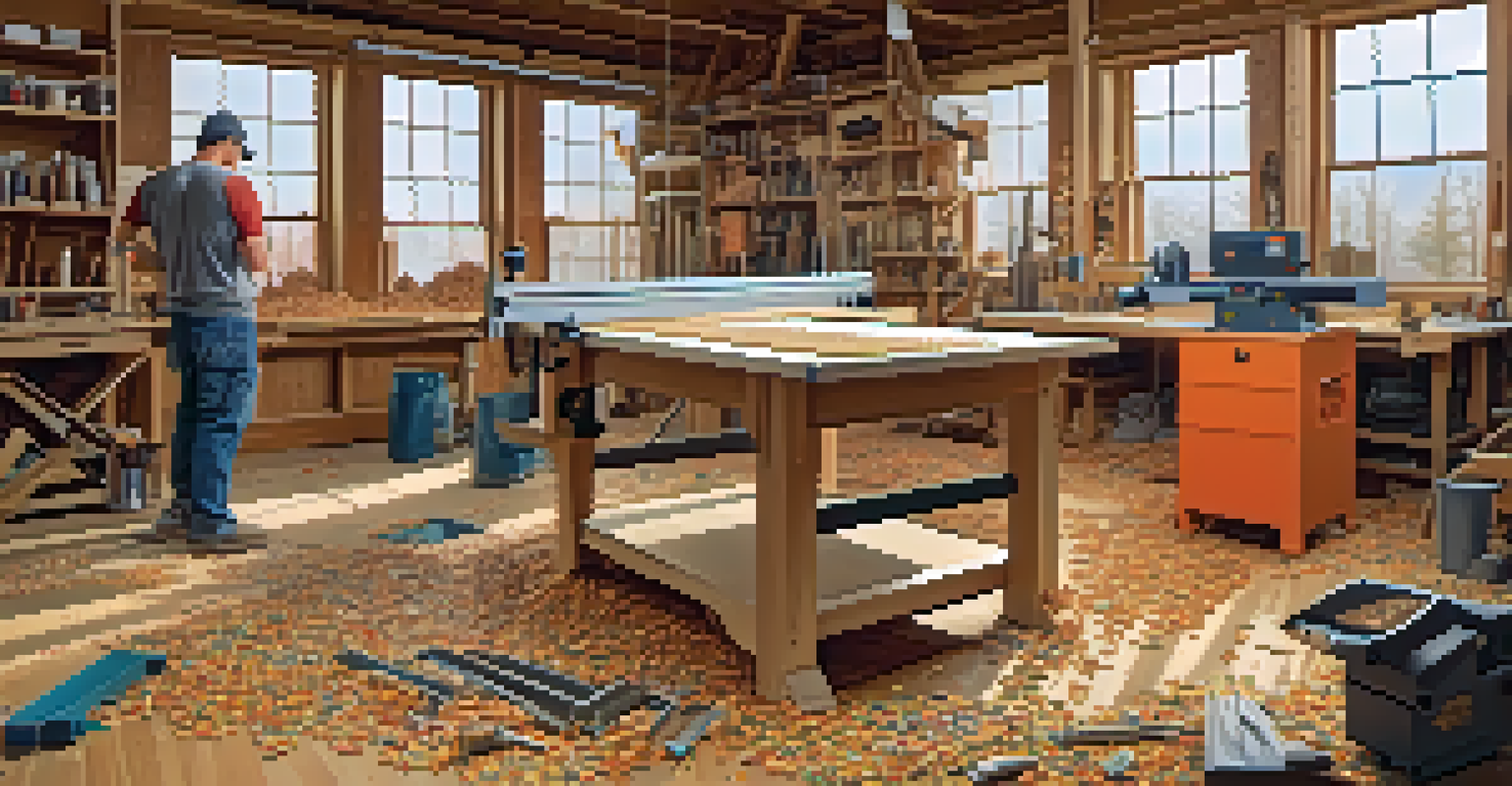The Evolution of Carving Tools: From Traditional to Modern

The Origins of Carving Tools: Ancient Beginnings
Carving tools have a rich history that dates back to ancient civilizations. Early humans used rudimentary stones and sticks to create simple designs and figures, driven by the instinct to express themselves artistically. These primitive tools laid the foundation for more sophisticated carving implements that would evolve over time.
Art is not freedom from discipline, but disciplined freedom.
As societies advanced, so did the complexity of their carving tools. The introduction of metals, such as bronze and iron, marked a significant turning point. These materials allowed artisans to craft sharper and more durable tools, enabling them to create intricate designs with greater ease and precision.
The evolution of carving tools mirrored the growth of human creativity and craftsmanship. From cave paintings to detailed sculptures, these early tools were instrumental in capturing the essence of human expression, paving the way for future innovations in artistry.
Medieval Carving Tools: Craftsmanship in the Middle Ages
During the medieval period, carving tools became more specialized as artisans honed their skills. The guild system promoted craftsmanship, leading to the development of various types of chisels, gouges, and knives tailored for specific tasks. This specialization allowed craftsmen to achieve remarkable levels of detail in their work.

Carving reached new heights during this era, with tools designed for wood, stone, and even bone. Skilled artisans crafted ornate furniture, intricate religious sculptures, and decorative architectural elements. The tools of the time reflected not just functionality but also the artistry and creativity of the craftsmen.
Carving Tools Evolved with Artistry
The history of carving tools reflects the growth of human creativity, from primitive stones to sophisticated implements that enabled detailed artistic expression.
As trade routes expanded, the exchange of ideas and techniques flourished, further enhancing the quality of carving tools. Innovations in tool design were shared across regions, leading to a diverse array of styles and techniques that defined medieval artistry.
The Renaissance: A Flourishing of Artistic Expression
The Renaissance period marked a significant revival of art and culture, and carving tools evolved to meet the demands of this artistic explosion. Artists sought precision and detail, leading to the creation of finely crafted tools that allowed for greater control and creativity. The introduction of the swivel knife, for instance, enabled intricate line work that was previously unattainable.
The tools we use have a profound and subtle interplay with the material we create.
Carving during the Renaissance was not limited to wood; artists began exploring marble and other materials, prompting the development of specialized tools for stone carving. This era saw the emergence of renowned sculptors like Michelangelo, who relied on innovative tools to bring their visions to life.
The Renaissance was a pivotal moment that transformed how carving tools were perceived. They became not just instruments of function but extensions of the artist's vision, allowing for a deeper connection between creator and creation.
Industrial Revolution: Mass Production and Tool Innovation
The Industrial Revolution brought about significant changes in the production of carving tools. Manufacturing processes improved dramatically, leading to the mass production of tools that were more affordable and accessible to a wider audience. This democratization of carving tools opened the door for hobbyists and amateur artists to explore their creativity.
New materials and manufacturing techniques, such as steel and later, high-speed steel, made tools more durable and efficient. Innovations like the powered carving machine emerged, allowing for greater speed and precision in carving. This marked a departure from traditional hand-carving methods and changed the landscape of artistry.
Power Tools Revolutionized Carving
The introduction of power tools in the late 20th century transformed carving, increasing efficiency and expanding creative possibilities for artists.
While some purists mourned the loss of traditional craftsmanship, the Industrial Revolution also sparked new styles and movements in art. The availability of quality tools encouraged experimentation, leading to the birth of various artistic movements that embraced both traditional and modern techniques.
The Rise of Power Tools: A New Era of Carving
The introduction of power tools in the late 20th century revolutionized the art of carving. Electric routers, saws, and other powered tools allowed artists to work faster and with greater precision than ever before. This shift not only enhanced productivity but also expanded the creative possibilities for artists and craftsmen alike.
Power tools have made it easier to tackle larger projects that would have been daunting with traditional hand tools. For example, the ability to carve large sculptures or intricate designs in a fraction of the time has opened new avenues for artistic expression. However, this convenience also raised questions about the authenticity of craftsmanship.
While some traditionalists may argue that power tools detract from the artistry of carving, many contemporary artists embrace them as valuable tools in their creative toolkit. The blending of traditional techniques with modern technology has led to innovative approaches that continue to push the boundaries of carving.
Sustainable Carving: Eco-Friendly Tools and Practices
In recent years, there has been a growing emphasis on sustainability within the crafting community. Artists and manufacturers are increasingly seeking eco-friendly materials and practices, which has influenced the production of carving tools. Biodegradable handles and sustainably sourced woods are making their way into the market, appealing to environmentally conscious creators.
Sustainable carving not only addresses environmental concerns but also encourages a deeper connection to the materials used. Many artisans now prioritize using local and reclaimed materials, fostering a sense of responsibility toward their craft and the planet. This shift is not just about tools; it represents a broader movement towards mindful artistry.
Sustainability Shapes Future Tools
A growing emphasis on eco-friendly materials and practices is influencing the production of carving tools, fostering a deeper connection to artistry and the environment.
As the demand for sustainable practices continues to grow, manufacturers are responding by innovating tools that align with these values. This evolution reflects a commitment to preserving the art of carving for future generations while nurturing the environment.
The Future of Carving Tools: Innovations on the Horizon
As we look to the future, carving tools are poised for further innovation. Advances in technology, such as 3D printing and CNC (computer numerical control) machines, are changing how artists approach carving. These tools allow for unprecedented precision and the ability to create complex designs that were once unimaginable.
Moreover, the integration of digital tools into traditional carving practices is becoming more common. Artists can now use software to design their projects, translating digital concepts into physical creations. This fusion of technology and craftsmanship opens up exciting possibilities for the next generation of artists.

While the core principles of carving remain unchanged, the tools we use will continue to evolve. The future promises a blend of traditional techniques and modern advancements, ensuring that carving remains a vibrant and dynamic art form.